
467 years ago, Cuenca was founded in Ecuador, a city of such beauty that it has become known as the “Athens” of South America. Founded on the ruins of the Inca city of Tomebamba (a major administrative center) and the Cañari city of Guapondelig, in 1999 its historic center was declared a UNESCO World Heritage Site. READ more… (1557)
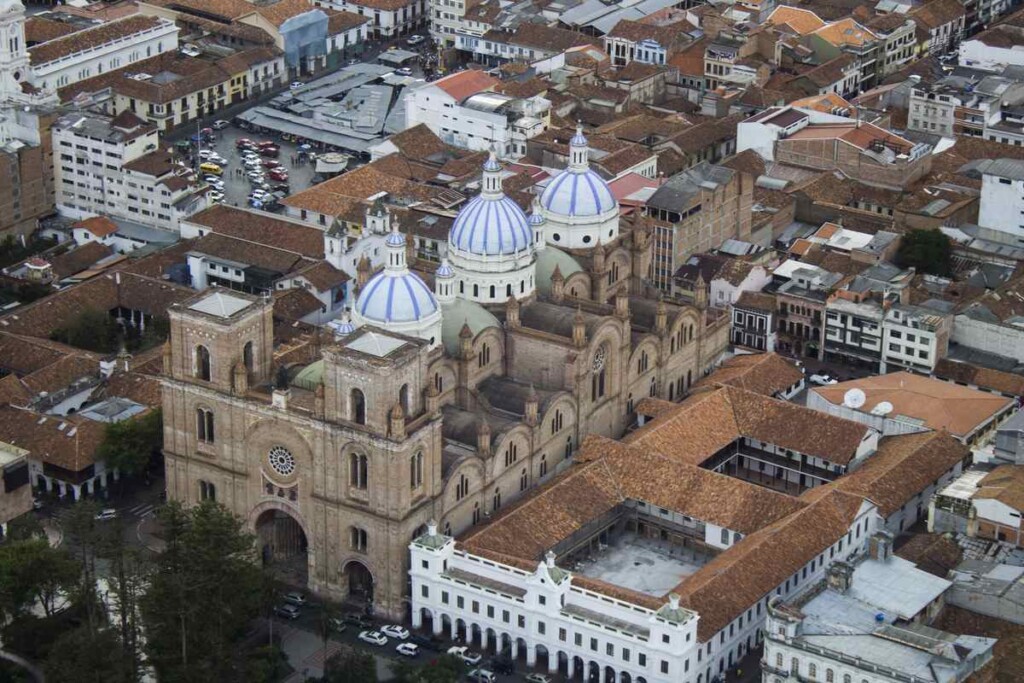
The first urban civilization that inhabited the plateau where Cuenca now lies were the Cañari, and though the Incas replaced the Cañari architecture with their own, they did not suppress the Cañari or their impressive achievements in astronomy and agriculture. As was customary for the Incas, they absorbed useful achievements into their culture. They renamed the city Tomebamba.
Tomebamba is considered a candidate for the mythical city of gold which the Spanish called El Dorado. The Spanish thought El Dorado was burned by the inhabitants after they heard of the Spanish conquests. Tomebamba’s destruction by its inhabitants prior to the arrival of the Spanish suggests it may have been what the Spanish called El Dorado.
MORE Good News on this Date:
- 78 years ago today, the UN’s International Court of Justice opened its doors to hear disputes between nations, when, and if, both parties agree to be bound by its decision (1946)
- The polio vaccine, developed by Dr. Jonas Salk, was declared safe and effective (1955)
- Bob Dylan performed his first major concert at the Town Hall in New York City, a 1500-seat theater known for its outstanding acoustics (1963)
- 43 years ago today, the first Space Shuttle blasted off in a successful test flight of the ship called Columbia (1981)
- East Germany‘s democratically elected parliament met for the first time, acknowledged responsibility for the Nazi holocaust, and asked for forgiveness (1990)
- The U.S. Navy rescued American cargo ship captain Richard Phillips from Somali pirates at sea when snipers shot and killed three of the hostage-takers (2009)
117 years ago today, the Burmese poet and writer known by the pen name Zawgyi was born. One of the most famous literary figures of that country, Zawgyi, or Thein Han as he was really named, studied at the universities of London, Dublin, and Rangoon, picking up several awards in his early years. He also worked as a diplomat in the post-war period.
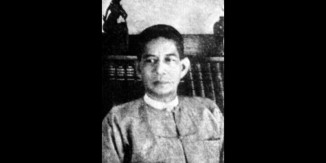
He took the name Zawgyi from a magician figure in Burmese folklore, and his poetry reflects this interest in philosophy. His most famous poem, Beda Lann, is one of the only ones that has been accurately translated into English. It compares the struggles of like to ‘Beda’—a hyacinth flower. (1907)
Riding the waves and tossed around,
Beda floats, moving up and down
After being smitten wasn’t left alone in pain
But a tidal wave drowned her again
Sinking down under, doesn’t re-appear
Till a wave surges up a couple of yards afar
Together with it, surfaces the beauteous Ma Beda
While Beda just clenched her teeth,
The unsubdued and unyielding Beda fair,
Still keeps on wearing the flower in her hair
Happy 77th birthday to David Letterman, who on February 1st, 1982, took the reins of NBC’s Late Night and kept them for 33 years before stepping down in 2015. In total he went on the air for 6,080 episodes, surpassing his friend and mentor Johnny Carson as the longest-serving late-night talk show host in American television history. Perhaps unsurprisingly, he now hosts what is essentially a late-night talk show on Netflix, called My Next Guest Needs No Introduction with David Letterman. The first season of which contained a cross-interview with Jerry Seinfeld entitled “You’re David Letterman, you idiot,”
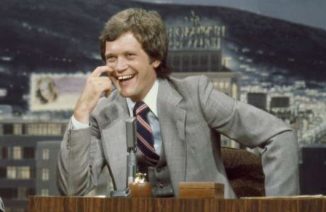
Like so many funny Americans, the start of his career began at the world-famous Comedy Store in Los Angeles. After finishing Light Night he appeared here and there, helping produce the Foo Fighter’s documentary Sonic Highways, and giving the introductory speech of Pearl Jam when they made it into the Rock and Roll Hall of Fame.
My Next Guest premiered in 2018 with Barack Obama as its first guest. Season 3 premiered in 2020, and includes Kim Kardashian, Kanye West, Robert Downey Jr., Dave Chappelle, and Lizzo as guests. It’s been praised, and even nominated for an Emmy, for its insight, set direction, and Letterman’s ability to draw unique moments out of its guests. Now sporting a huge beard, he practices transcendental meditation. (1947)
63 years ago today, Yuri Gagarin became the first human to travel into outer space, orbiting the Earth aboard Vostok 1.
Out of 20 trained cosmonauts, the short Russian pilot—at 5 ft 2—was the best candidate to fit into the tiny capsule. He became an international celebrity and was awarded many medals and titles, including Hero of the Soviet Union, the nation’s highest honor.
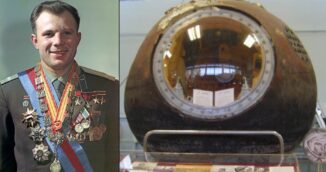
Modest and intellectual, Yuri was said to have quick reactions and an ability to handle celestial mechanics and mathematical formulae with ease. Touring widely abroad at the invitation of about 30 countries, he gained a reputation as an adept public figure, able to answer any question at press conferences, and was noted for his charismatic smile. Because of his popularity, US President John F. Kennedy barred Gagarin from visiting the US during the Cold War.
Gagarin died seven years after his historic orbit when his MiG-15 training jet crashed. He was honored with a 12-mile parade attended by millions of people and his ashes are interred in the walls of the Kremlin.
Born in the village of Klushino (a town later renamed after him), in his youth Gagarin was a foundryman at a steel plant. He later joined the Soviet Air Force as a pilot before his selection for the Soviet space program. Following his spaceflight, Gagarin became deputy director of the Cosmonaut Training Centre, which also was later named after him. He was also elected as a deputy in 1962 and then to the Soviet of Nationalities, respectively the lower and upper chambers of the Supreme Soviet.
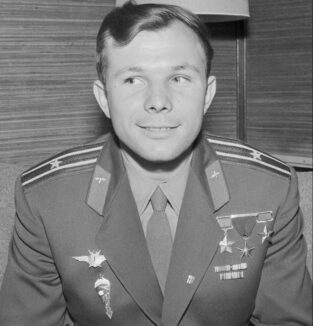
The 1964 Soyuz 1 launch, which was rushed due to political pressures, despite Gagarin’s protests that additional safety precautions were necessary, resulted in multiple system failures aboard the spacecraft, which caused it to crash killing his friend, Vladimir Komarov. After the tragedy, the Soviets permanently banned Gagarin from training for and participating in further spaceflights. (1961)
And, 155 years ago today, the North Carolina legislature passed an anti-Ku Klux Klan Law, which prohibited night riding and wearing masks, to combat the racist group’s excessive violence.
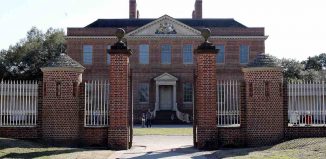
Two months later, empowered by the law, Governor Holden declared martial law in two counties and deployed troops after several murders. Although the troops fire no shots, more than 100 men were arrested in the effort to restore order and protect blacks and white Republicans. Two years later, the U.S. Congress held hearings on the Klan and passed a harsh anti-Klan law modeled after this North Carolina statute. (1869)
And on this day 108 years ago, Beverly Cleary, the beloved children’s book author was born.
 It was Cleary’s own school librarian who took a special interest in her and said that someday she should write for children, the kind of books she longed to read but could not find on library shelves—funny stories about neighborhood kids growing up. And so Ramona Quimby, Henry Huggins, Ellen Tebbits, and The Mouse and the Motorcycle were born.
It was Cleary’s own school librarian who took a special interest in her and said that someday she should write for children, the kind of books she longed to read but could not find on library shelves—funny stories about neighborhood kids growing up. And so Ramona Quimby, Henry Huggins, Ellen Tebbits, and The Mouse and the Motorcycle were born.
The neighborhood streets of Klickitat and Tillamook, where her characters play, actually exist in the Portland neighborhood where Cleary went to school.
She became a librarian herself, after having earned a B.A. in English at UC Berkeley. Little boys were bored in her library because there were no books about “kids like us.” Her first book, Henry Huggins was published in 1950 –her last came out in 1999– and she has sold 90 million books. She has also won numerous literary awards, written two autobiographies, and now lives in a retirement community in Carmel, California. (1916)
Her birth date is also “Drop Everything and Read” day, a school program –D.E.A.R. – that allows kids to lie around in classrooms with books of their choosing. April is also National Library Month. She died on March 25, 2021… WATCH a 2016 interview with Cleary about her 100th birthday…
44 years ago today, a young man named Terry Fox began his heroic Marathon of Hope across Canada. In St. John’s, Newfoundland, standing on an artificial leg, he touched his foot into the Atlantic Ocean and began his run hoping to complete a marathon every day until he reached the Pacific coast.
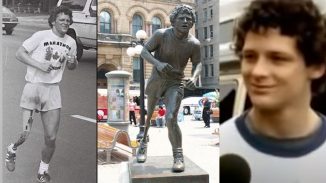
An active teenager, Terry was involved in many sports, but at 18 years old he was diagnosed with osteogenic sarcoma (bone cancer) in his knee and was forced to have his right leg amputated. While in the hospital, Terry was so overcome by the suffering of young child cancer patients that he decided to run across the vast country to raise money for fighting the disease—and it would revolutionize cancer research in Canada.
After 18 months of vigorous training, Terry’s run began with little fanfare and he spent days alone in the sleet and cold rain. Enthusiasm grew though, and money collected along his route began to mount, especially when he reached Ontario. He ran 26 miles (42 km) a day through six provinces until, on September 1st, after 143 days and more than 3300 miles (5,373 km), Terry was forced to stop and enter a hospital, because the cancer had spread to his lungs. An entire nation was stunned when Terry passed away ten months later. The monumental Canadian was gone, but his legacy was just beginning.
In the years since his famous run, The Terry Fox Foundation continues working toward his goal of a world without cancer. Thousands of volunteers organize annual Terry Fox runs across the country every year—and to date, over $750 million has been raised for cancer research in Terry’s name. Before his death, at 22 years old, Fox became the youngest person ever to be awarded The Order of Canada. WATCH an inspiring video and learn what happened next… (1980)
SHARE the Milestones, Memories, and Music…